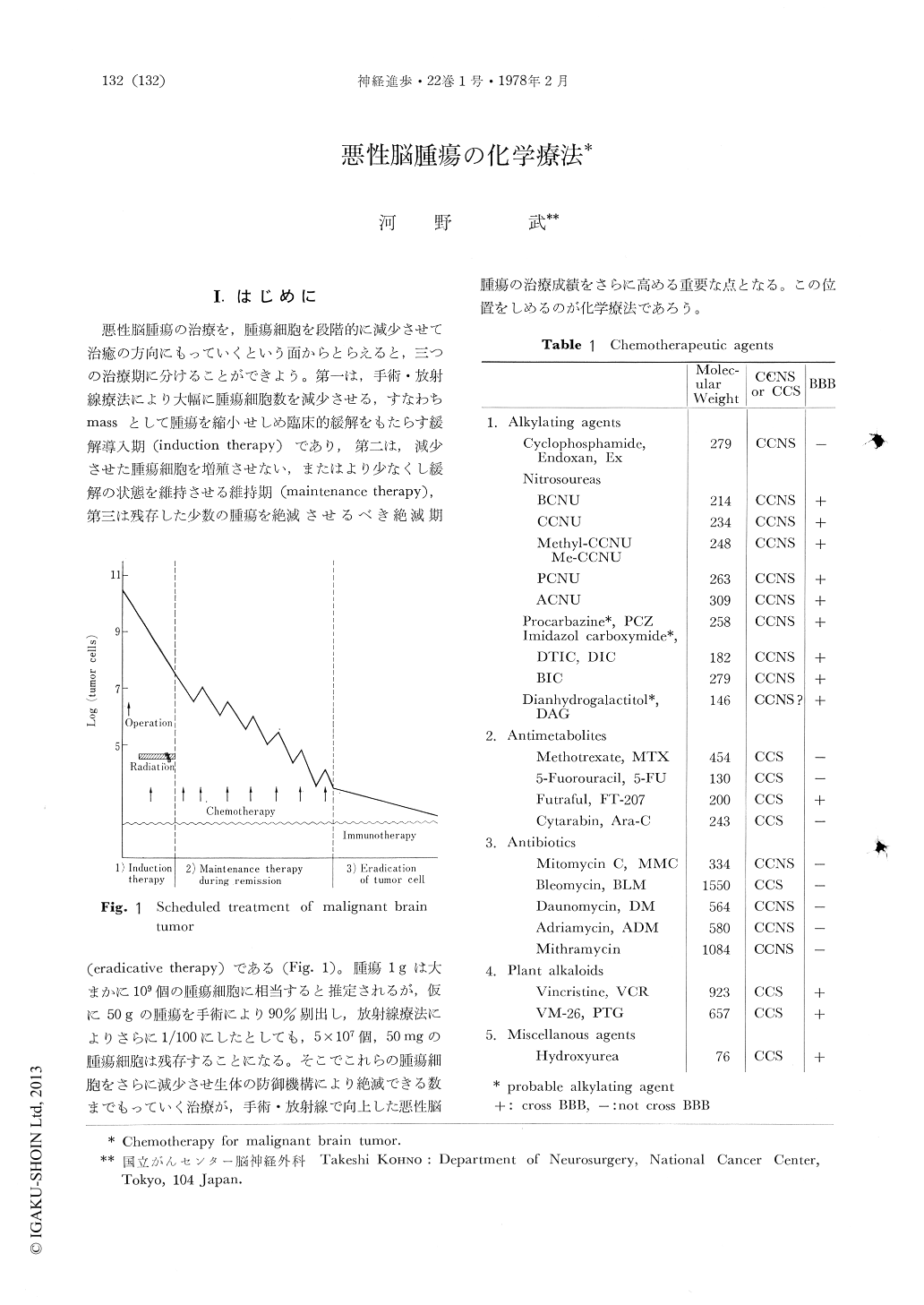Japanese
English
- 有料閲覧
- Abstract 文献概要
- 1ページ目 Look Inside
I.はじめに
悪性脳腫瘍の治療を,腫瘍細胞を段階的に減少させて治癒の方向にもっていくという面からとらえると,三つの治療期に分けることができよう。第一は,手術・放射線療法により大幅に腫瘍細胞数を減少させる,すなわちmassとして腫瘍を縮小せしめ臨床的緩解をもたらす緩解導入期(induction therapy)であり,第二は,減少させた腫瘍細胞を増殖させない,またはより少なくし緩解の状態を維持させる維持期(maintenance therapy),第三は残存した少数の腫瘍を絶減させるべき絶滅期(cradicative therapy)である(Fig. 1)。腫瘍1gは大まかに109個の腫瘍細胞に相当すると推定されるが,仮に50gの腫瘍を手術により90%別出し,放射線療法によりさらに1/100にしたとしても,5×107個,50mgの腫瘍細胞は残存することになる。そこでこれらの腫瘍細胞をさらに減少させ生体の防御機構により絶滅できる数までもっていく治療が,手術・放射線で向上した悪性脳腫瘍の治療成績をさらに高める重要な点となる。この位置をしめるのが化学療法であろう。
化学療法には,放射線増感剤として放射線との併用により治療効果をあげる面もさかんに開発されている。
The role of chemotherapy in malignant gliomais descussed.
Treatment of malignant brain tumor is based on (1) induction of remission with surgery and radiation, (2) maintenance of remission with chemotherapy and (3) eradication of tumor cellswith immunotherapy. That is, in maintenance of remission, chemotherapy plays a important role in order to obtain a stepwise reduction of tumor cells which remain after surgical and radiative procedures.
Main factors to be considered in malignant brain tumor chemotherapy are the presence of Blood Brain Barrier (BBB) and small percentage of proliferating cells.

Copyright © 1978, Igaku-Shoin Ltd. All rights reserved.


